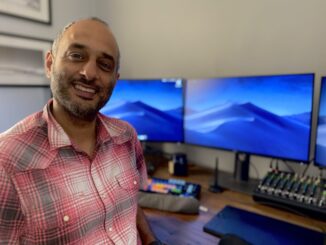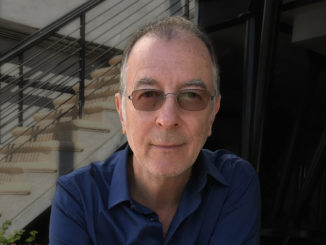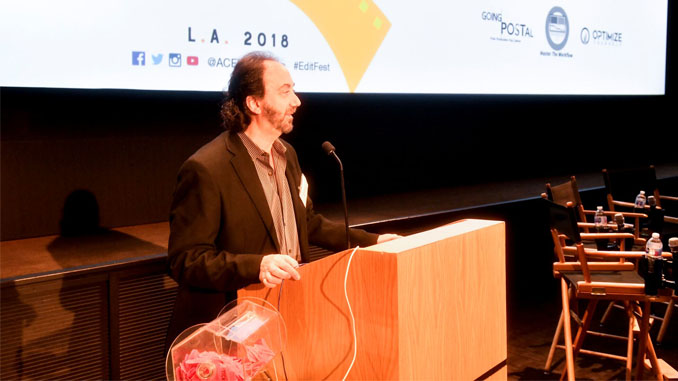
by Edward Landler • photos by Peter Zakhary/Tilt Photo
On a Saturday morning in late August, a crowd streamed down Dopey Drive on the Disney lot into the Disney Main Theatre, filling it to capacity, for EditFest LA 2018, the 11th annual edition of this celebration of the art and craft of editing presented by the American Cinema Editors (ACE). Just under half of the audience, almost entirely composed of editors and assistant editors, was attending the event for the first time.
The attendees came to be immersed in four in-depth panels featuring some of the best editors in the business sharing their professional experiences, practical insights and aesthetic perspectives. With breaks, lunch and a cocktail party closing the day, the event provided an intimate setting in which both attendees and panelists continued to discuss with one another the issues and concerns brought up during the panels.
Following a presentation of new features in DaVinci Resolve by Blackmagic Design’s Dave McLaughlin, ACE President Stephen Rivkin, ACE, welcomed the audience and thanked Jenni McCormick and the ACE staff for organizing the event, and acknowledged the program’s sponsors, including the Editors Guild, Disney Digital Studio Services, Adobe and Avid.
Following is a recap of the event:
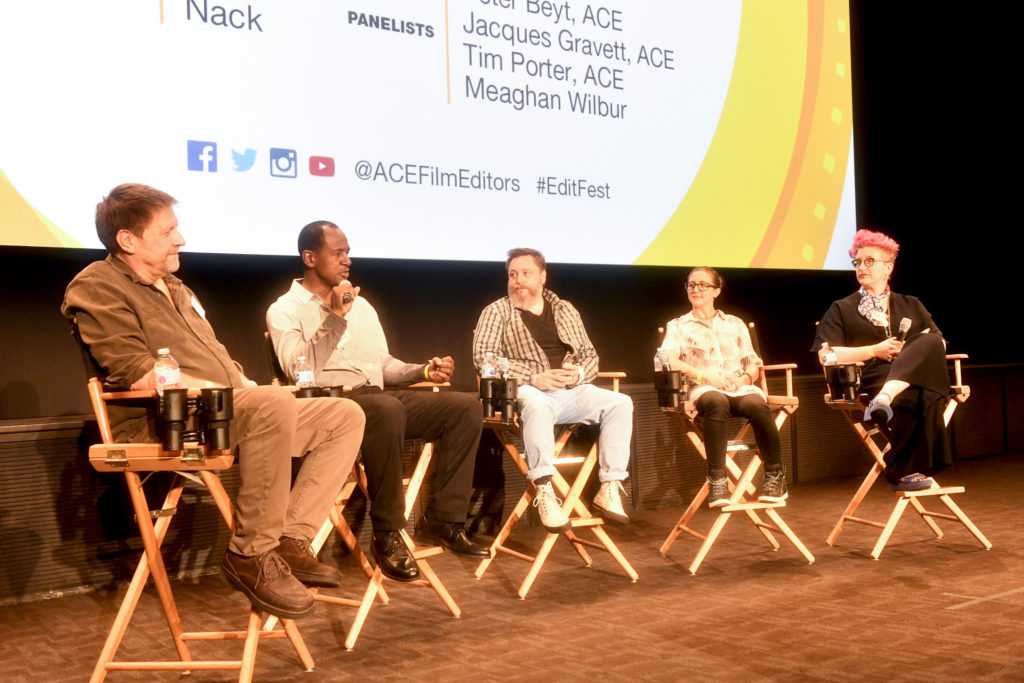
Small Screen, Big Picture
Personal Experiences and Challenges in the Cutting Room
Peter Beyt, ACE (Will & Grace, The Golden Girls)
Jacques Gravett, ACE (Love Is_ , 13 Reasons Why)
Tim Porter, ACE (The Crown, Game of Thrones)
Meaghan Wilbur (2 Dope Queens, Conan)
Moderated by Margot Nack, Strategic Business Developer,Adobe
Working almost exclusively in television, the first panel’s editors focused on the issues they face in a wide variety of TV material. To begin, moderator Nack screened the clips chosen from each editor’s shows in succession. After seeing all the clips, despite the striking differences between the shows, Nack noted, “The episodic programs you work on are all quite cinematic.”
Demonstrating his work on the reboot of Will & Grace (1998-2006, 2017-present), Beyt showed an opening scene, as it was aired, with Grace and Will at home intercut with his visit to a gay bar that he tells her about — in comparison to the scene as originally shot with Grace also in the bar.
After the first cut, NBC chose not to begin the show in the bar and had footage shot of Will telling Grace the story in their apartment. “Grace’s image was digitally removed completely from the bar. I’m working with pixel-pushing,” the editor explained.
Revealing that every 20-minute episode of the show has about 1,600 edit decisions, he continued, “We’re shooting fragments. It’s like a movie shoot. Everything we build is a different house of cards.” This was a far cry from his work on Golden Girls (1985-1992), shot like a stage play with multiple cameras in the style developed by Desilu in the early 1950s.
“Shooting live-to-tape with eight cameras chasing them around the stage allows for a lot of the prize moments to break out.” — Meaghan Wilbur
For 13 Reasons Why (2017-present), Gravett pointed out how having to deliver two episodes at the same time “was like putting together a small two-hour movie.” With Netflix hiring indie directors whose approach may be different from the showrunners’, he said, “I try to make sure that the footage lines up to the vision of the script.”
Gravett had intended to screen a sequence with two high schoolers talking about their break up in which one of the actors drew from her own experience, but another scene with the same actors getting high came up instead. Nevertheless, his comments were relevant for both: “I’ll come back and say, ‘I think it’s a little too cutty.’ I try to be simple and find the best performance.”
The horse battle sequence shown from Game of Thrones (2011-present) was choreographed, rehearsed for months in advance, and shot over 25 days on a field near Belfast, Northern Ireland. Editor Porter built his select reels from one angle while the same scene was shot from the other direction, noting, “Every time you see a clash of horses, you see a real horse and then you see a digital horse. It takes 25 days to fuse it and 25 days to lock it.”
Big effects shoots like this are planned using pre-viz and, Porter said, “In post, we put in more FX blood and smoke.” Even in less spectacular productions, Will & Grace’s Beyt remarked, “This FX world is making timing and smoothness wonderful…and there are tricks that allow you to hide lifts from performances.” Comparing his work on Thrones to editing The Crown (2016-present), Porter remarked, “You get the material, you cut it. Performances, dialogue, no action.”
In an opening dual monologue from 2 Dope Queens (2018-present), stars Jessica Williams and Phoebe Robinson began improvising. Showing how she captures spontaneous moments, editor Wilbur asserted, “Shooting live-to-tape with eight cameras chasing them around the stage allows for a lot of the prize moments to break out.”
Coming from years of working on Conan (2010-present), she said, “It’s amazing to watch polished performers re-set and re-phrase lines while shooting to make it land right, putting it there for the editors to find. Two hours of footage becomes a seven-minute piece. The first pass I cut for me. What makes me laugh stays in; if it pays off later, it stays in.”
Getting questions from the audience about working with assistant editors, all four panelists confirmed how much they relied on assistants and their skill sets. Gravett pointed out, “With all the stuff the assistant has to learn now, it’s too much. I would never have gone on to be an editor if I were coming up like they do now.” Wilbur concluded, “With so much to know, sometimes you find yourself working as both editor and assistant. I’ve gone back and forth many times.”
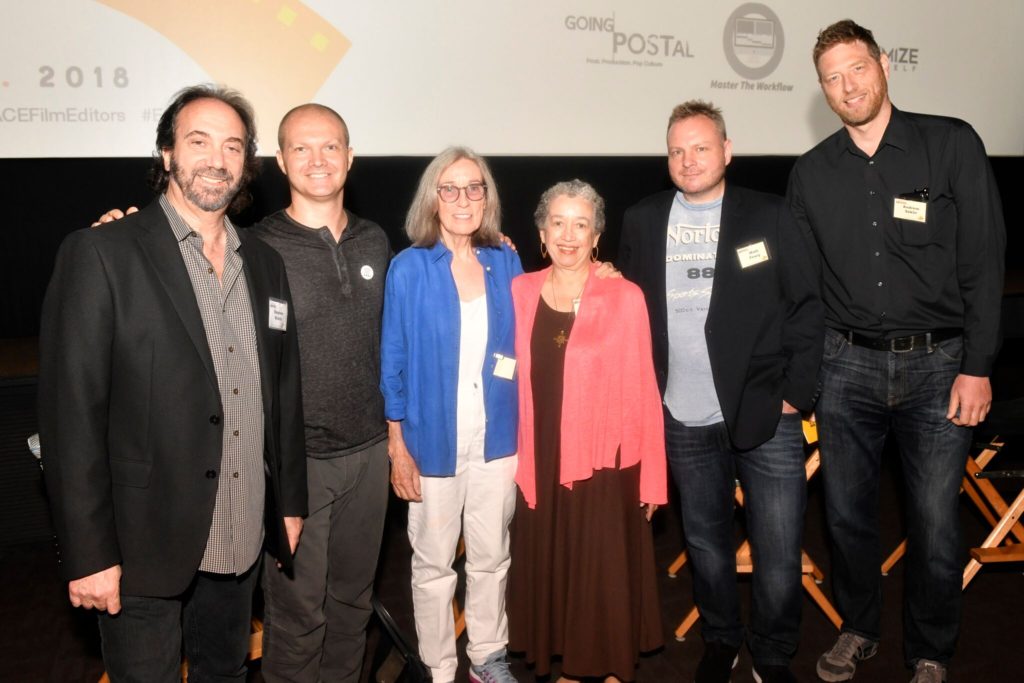
The Extended Cut
How to Survive and Thrive in Editorial
Zack Arnold, ACE (Shooter, Empire; founder of Optimize Yourself podcast)
Lillian Benson, ACE (Chicago Med, Eyes on the Prize II)
Carol Littleton, ACE (Beloved, E.T. the Extraterrestrial)
Andrew Seklir, ACE (Westworld/HBO, Fargo/FX; an architect of ACE Best Practices Guide)
Moderated by Matt Feury, Director of Product Marketing/Pro Video, Avid
The growing pressure of workloads suggested by the first panel was brought to the foreground in the second panel. Moderator Feury began by reflecting on the growing discontent and anger about conditions affecting editors’ physical and mental wellness, as well as the industry’s long avoidance of diversity and inclusion. In the discussion that followed, four veteran professionals shared hard-earned insights they learned through experience.
Asked why he started his Optimize Yourself podcast, Arnold told of editing his first feature “chained” to his edit suite at home for seven to eight weeks and realizing, “I cannot live like this, but I love my work. How can we be better storytellers by taking care of ourselves as a central component of the process?”
Having worked in a space with a six-foot-high ceiling, the six-foot-nine-inch Seklir related how the ACE Best Practices Guide came about: “We’re still fighting for things that should have changed a long time ago in terms of working conditions and workplace environment… There’s a culture on every show.”
The first female African-American in ACE, Benson gave an awareness of the larger personal ironies, noting that while she had not enjoyed working with a woman director who always argued, “The first person that got me a job was a woman. Everyone has a moral center and it will be challenged forever. If it’s bad, leave; you never get the time back…and learn to recognize when people are complimenting you.”
Having experienced the range of ironies herself, including getting fired and replacing someone who has been fired, former Guild President Littleton remarked, “It’s important to have friends you can talk to about this.”
After asking the audience if any were there because “editing is just a job” — and no hands went up — Arnold offered, “Protect that which will help you get along in the industry.” Reacting to the suggestion that you have to “pay your dues,” he said, “If you’re not getting stronger and not learning, it’s not worth it. If you’re growing and learning, it’s still hard but it’s worth it.”
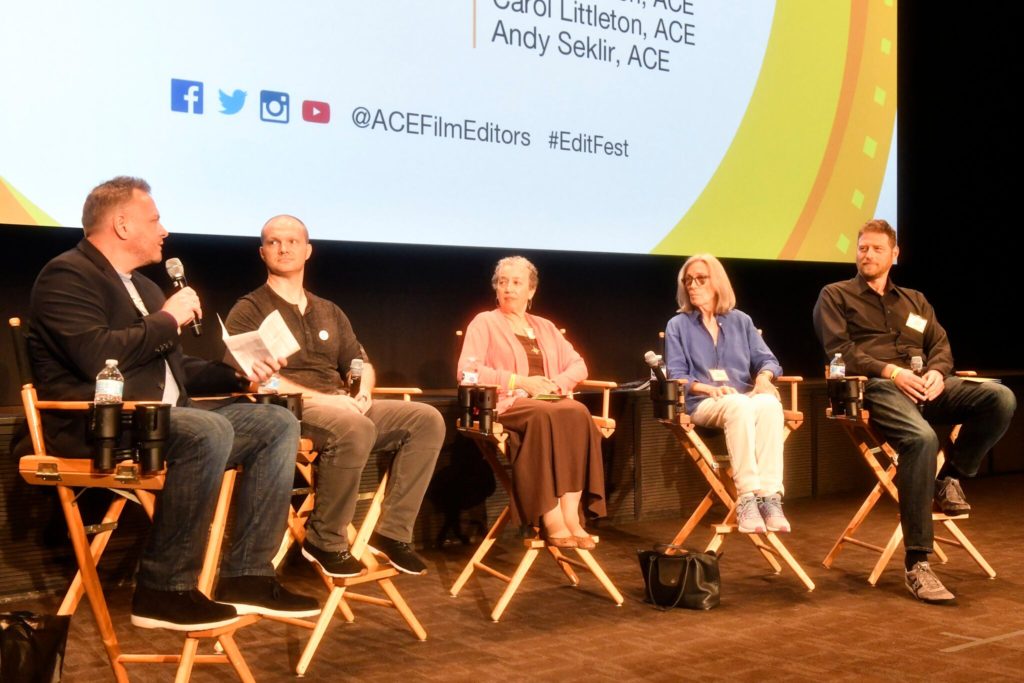
Describing shows “where there’s a culture of competition” and “stress that you can’t flee and you can’t fight,” Seklir called for “a place to talk about it with others.” Littleton noted, “Times like today are valuable, when we can talk about it.” She added “Fear, it can eat you; one way to work around it is to stay healthy — mind and body.”
All the panelists offered ways to just take a break on the job to keep going. A director had told Benson, “Get your 15 minutes of sun.” Littleton advised, “Long walks! You’re sitting there forever.” Arnold offered, “You’re thinking brain cannot be activated without moving.” With only a set number of decisions a human can make in a day, Seklir pointed out, “You’re burning through a lot of decisions editing.”
The moderator wondered how the rise of the Avid had affected editors. Recalling how she rewound reels before digital editing, Littleton said, “There were all sorts of little things that gave us breathing space… Now we’re getting clobbered with so much footage, and I’ve suggested certain habits we’ve had in the past that can work today.”
Rounding out the session, a last question came from an educator who asked how to teach an awareness of such attitudes at early levels of education. A public school teacher before going into film, Benson proposed, “If it feels wrong, it is wrong… Reward those who are empathetic. Teach fairness and how to praise people. Encourage them to be physical. I also try to look at character — don’t lie, don’t bully.”
In general, Littleton put forward, “I have always tried to surround myself with generous people. What we edit affects others, and I am very mindful of that.”
Mentioning that he taught a three-hour class at USC, Arnold closed with, “At least once an hour, I’ll tell them to get up.”

Inside the Cutting Room with Bobbie O’Steen
A Conversation with…
Tatiana S. Riegel, ACE (I, Tonya; Lars and the Real Girl)
Back from lunch, the audience settled in for O’Steen’s one-on-one conversation with Riegel who grew up in Westwood, knowing she wanted to get into film. She recalled, “I used to sneak on to the 20th Century Fox lot to watch shows like The Love Boat [1977-1987] being shot, but I realized that unless you were the director or the DP, it was pretty boring. Later, I fell into editing and that was perfect.”
After graduating from college and contacting over 700 people looking for work, she landed her first job in the industry through a friend of a friend who put her in touch with an editor. Having gone through that, Riegel states, “Now I try to meet anybody who contacts me about finding a job, and I always ask them to let me know what happens. If something comes up that I learn about, I’ll contact the last three or four people who contacted me.”
Riegel’s first feature work was as an apprentice editor on Tim Hunter’s The River’s Edge (1986). Beginning with Quentin Tarantino’s Pulp Fiction (1994), she became the late ACE editor Sally Menke’s assistant. “I’m grateful to Sally for letting me come in, observe, cut scenes and really participate,” she reflected. “I try to do the same with my assistants.”
Moving on to Riegel’s work as editor with director Craig Gillespie, moderator O’Steen quoted Tarantino: “The director/editor collaboration is like going on a blind date, getting married for a year and seeing if it will work out.” Having done five shows with Gillespie, Riegel responded, “We make each other better than we would necessarily be otherwise. I try to stay up with camera and show what I can cut right away, before music. It’s really hard to take it out when you’re used to having it in there.”
Screening a clip from their first collaboration, Lars and the Real Girl (2007), about a young man’s love for a plastic sex doll he calls Bianca, Reigel revealed, “I love movies where I laugh and cry.” Seeking to achieve this mix of emotion in Lars, she said, “After a discussion, we treated Bianca like a character, cutting to her for reaction shots.”
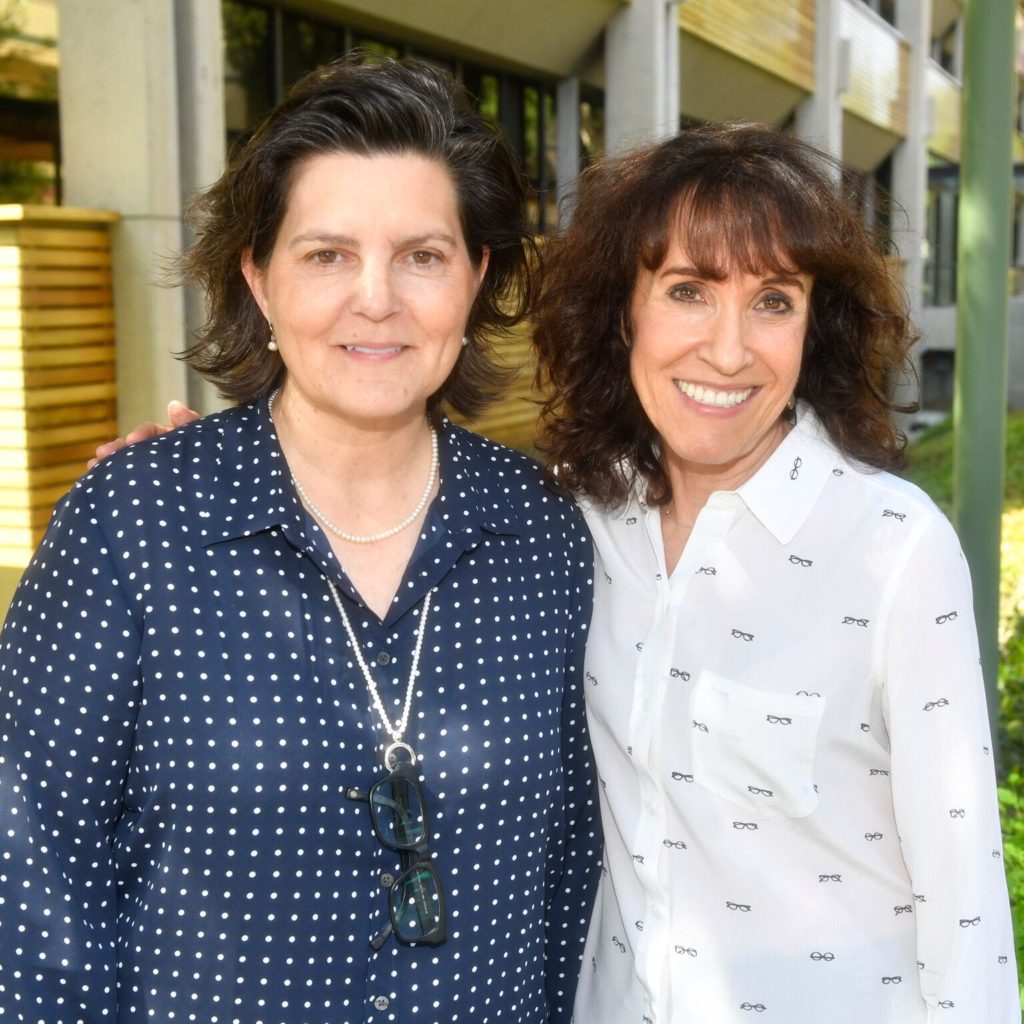
Further demonstrating her editing process, she screened bookend sequences from the beginning and end of Nat Faxon and Jim Rash’s The Way, Way Back (2013), marking the change in the relationship between Steve Carrell’s and Toni Collette’s characters by varying her approach to the visual elements. In the closing scene, the editor conveyed the dramatic shift more strongly by taking out all the dialogue.
When Gillespie first approached Riegel about the potentially tawdry story of figure skater Tonya Harding, she wondered how the movie could work. She said, “Then, I read the script — ‘Oh, I get it.’” Balancing on-camera interviews with voiceovers continuing into acted vignettes, the direction and the editing allow the film to smoothly break the fourth wall with interview lines spoken directly to the audience by the actors in the vignettes.
The editor aptly defined her cutting decisions by noting how she has tried to describe editing to her mother: “You create where your eyes go to see what you want to do, and in performance, doing everything we do so the actors say ‘thank you’ to us more often.” She later mentioned that actress Allison Janney thanked her for keeping a specific take in a scene just before she received the Oscar for her performance in I, Tonya (2017).
Riegel displayed her definitions in two clips from that movie. After the first, which began with the first major skating scene of the film, she affirmed, “Each major skating sequence had its own personality, its own way of cutting.” She also pointed out that each of the skating sequences were cut to specific music.
Rounding out the conversation, a final question from the audience inquired as to which of her films she felt most emotionally connected. Without hesitation, Riegel declared, “Pulp Fiction, working with Sally and switching to nonlinear editing; meeting Craig on Lars and the Real Girl; and, another pivotal change in my career, I, Tonya — to be recognized with an ACE Eddie Award and an Oscar nomination.”
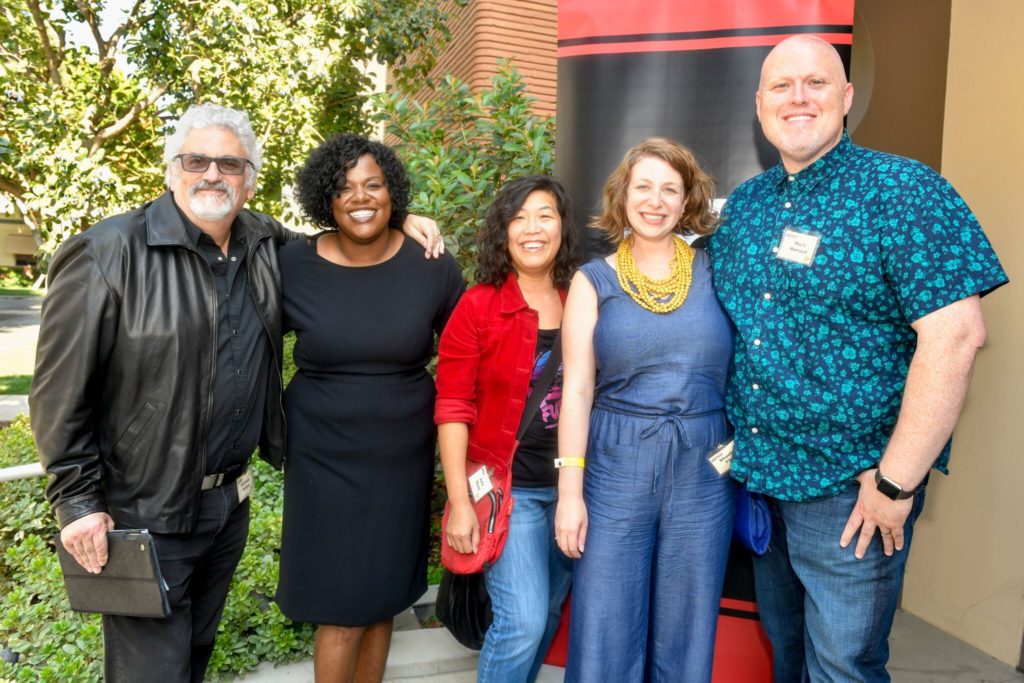
The Lean Forward Moment
Mark Hartzell (Lost in Space, True Blood)
Joi McMillon, ACE (If Beale Street Could Talk, Moonlight)
Shoshanah Tanzer (Queen Sugar, The Catch)
Julia Wong, ACE (The Belko Experiment, X-Men: The Last Stand)
Moderated by Norman Hollyn, ACE, Professor, USC School of Cinematic Arts
Like every year, Hollyn asked the “Lean Forward Moment” panelists “to choose a clip of a show that inspired you to go into the business and continues to inspire you.” This year, however, to point up the need for mentorship as apprentice editor positions disappear, all four panelists were alumni of the ACE Internship Program.
Editor Carsten Kurpanek, current co-director (with editor Tyler Nelson) of the Internship Program, gave a brief overview of its 26-year history and how it works. Moderator Hollyn also brought attention to the Blue Collar Post Collective, a grassroots initiative making educational and mentoring opportunities accessible to beginning post-production personnel.
The first clip screened, from Star Trek II: The Wrath of Khan (1982), was chosen by Hartzell. With a wink to Ricardo Montalban’s scenery-chewing, he explained how this movie affected his cutting on the Lost in Space (2018) reboot, “to make emotions clear to everybody watching, by paying attention to characters’ reactions, silent moments in which people are seen listening.”
Editing Sacred Lies (2018) for Facebook Watch, Hartzell was struck by a new way to see how audiences reacted to his work. On Facebook itself, he said, “I was getting immediate comments on what people were seeing.”
The car crash sequence at the beginning of Blue (1992), the first of Krzysztof Kieslowski’s Three Colors trilogy, was screened by McMillon. Pointing out how the director used every detail with intent, she observed, “This opening has very little dialogue so sound is very important. Sound is a big part of how co-editor Nat Sanders, director Barry Jenkins and I conceive a scene.” Going into a larger discussion on sound and using music in the editing process, Wong maintained, “I’ll incorporate a temp score myself, putting music through five or six scenes as really just one long movement.”
Asked by Hollyn how they observed different editing approaches during their internships, all agreed that it was through being able to participate. “They asked me what I thought,” McMillon recalled. When asked for input, Hartzell advised, “If you’re in a safe spot, give your opinion.” Wong’s mentor, Tina Hirsch, ACE, let her cut a scene. Tanzer also attested, “I still remember Tina going over a sequence with me, explaining what she did and the decisions she made.”
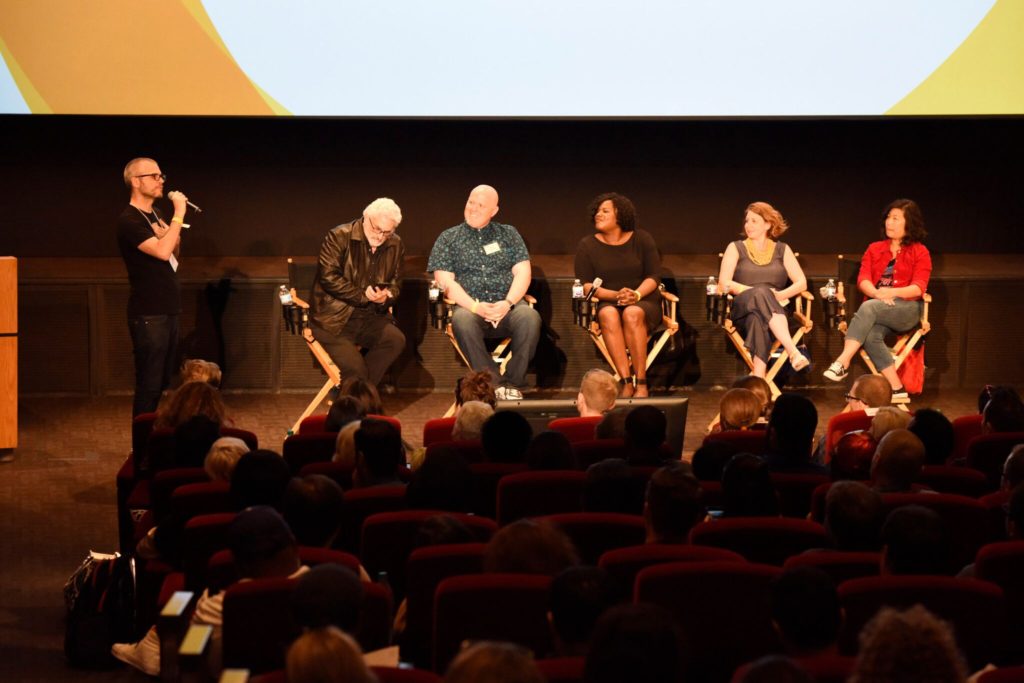
Embracing old Hollywood with a sequence from Billy Wilder’s Double Indemnity (1944), Tanzer remarked, “It’s a great study of when to cut and when not to cut. The editing lets the dialogue breathe and set the pace. It affects my work on reality shows; is it more interesting to see what the person is saying or to see the other person figuring out what’s being said?”
The final clip, Linda Hamilton’s asylum breakout in Terminator 2: Judgment Day (1991), chosen by Wong, provided an exercise in interweaving parallel action and the use of inserts. The editor offered, “Audience involvement changes with so many callbacks from the original Terminator [1984]. And the sunglasses crushed on the floor; you don’t really need that but it’s really cool.”
With the moderator noting how episodic TV was affected by things connecting from different episodes, Tanzer underscored, “When it’s decided for the story to go another way, it creates a ripple effect on a number of episodes.”
With scheduled time running out, questions from the audience came into Hollyn’s cell phone on Twitter. The last question was directly stated: “Did your internship help you in terms of entrée?”
Mapping the big picture, McMillon reflected, “It was important to get to know the different kinds of cutting rooms and learning how diplomacy plays a part. Later, I worked six years with Maysie Hoy. She showed me how to make the job enjoyable; it’s my work, not my life.” With echoes, perhaps, of the day’s earlier panels, Tanzer opined, “I learned to look for more diverse workplaces and projects to work in.”
“Internship led to my first job and my second,” Hartzell declared. “When people get to know you are cogent and intelligent, they’ll want to help you.”
“No better way to wrap and go party,” concluded Hollyn, leaving everyone a lot to talk about out on Dopey Drive.



